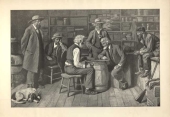The Checker Maven
The World's Most Widely Read Checkers and Draughts Publication
Bob Newell, Editor-in-Chief
Published every Saturday morning in Honolulu, Hawai`i
Noticing missing images? An explanation is here.
The Jaywalker Gambit

If you visit Honolulu, you'd best not jaywalk; the fine is a whopping one hundred and thirty dollars, and the police don't hesitate to hand out the tickets. Jaywalking is a gambit you won't want to risk; it could really cost you.
There's a Jaywalker Gambit in checkers, too, and it won't cost you a cent to hear how Willie Ryan describes it in his classic book, Tricks Traps & Shots of the Checkerboard.
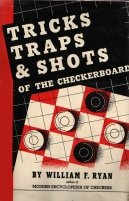
"The late great A. J. Heffner, of Boston, former Champion of America and heralded as one of the greatest analysts of all time, was responsible for christening the following trap 'the Jaywalker,' pointing out that many experts had wandered into it, unaware of their predicament until it was too late to bail out. The Jaywalker, a formational 'natural,' was originally rated drawable on the basis of Tillum and Aitchison's play, as quoted in the trunk game. But the eminent British authority, J. A. Kear, of Bristol, England, published an analysis indicating that, by introducing the 16-19 move at Note E, the gambit ended in defeat. Kear's play remained unchallenged for many years, but the data assembled here indicate that Kear's 16-19 move is nothing more than a transposition that ultimately runs back into the Tillum and Aitchison draw. Play:
| 11-16 | 30-26 | 7-10 |
| 24-19 | 11-16 | 26-22---2 |
| 8-11 | 22-17---A | 10-14, |
| 22-18 | 4-8 | forming the |
| 10-14 | 17-10 | diagram. |
| 26-22 | 6-24 | |
| 16-20 | 28-19 | |
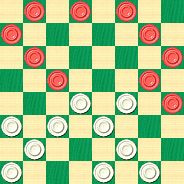
WHITE
White to Play and Draw
W:W32,31,29,27,25,23,22,21,19,18:B20,16,14,12,9,8,5,3,2,1.
A---A very weak move---1, forming the famous Jaywalker position. The correct play here for a draw is: 28-24, 4-8, 22-17, 7-10, 26-22, 3-7---B, 19-15, 10-26, 17-3, 26-30, 18-15, 6-10, 15-6, 1-10, 31-26, 30-23, 27-18, 20-27, 32-23, 9-13, 21-17, 5-9, 25-21, 2-7, 29-25, 7-11, 3-7, 10-14, 17-10, 16-20, 7-16, 12-26. Wm. F. Ryan.
B---White has a pretty trap here, for if the play goes 9-13, 18-9, 5-14, white wins by storm with: 19-15!, 10-26, 17-10, 6-15, 22-17, 13-22, 25-4, 26-30, 4-8. D. G. McKelvie."
1---The computer sees 22-17 as only very slightly worse than 28-24, so we're not sure why Willie thinks it's so weak. Perhaps the position is simply more difficult to play correctly---Ed.
2---Here's the real problem. The text move is substantially weaker than 25-22, though still not losing. Perhaps Willie should have flagged this move instead---Ed.
Don't be a jaywalker; walk the straight and narrow and solve the position. But we won't fine you if you don't get it; you can always safely click on Read More to see the solution and detailed notes.![]()
One Stroke
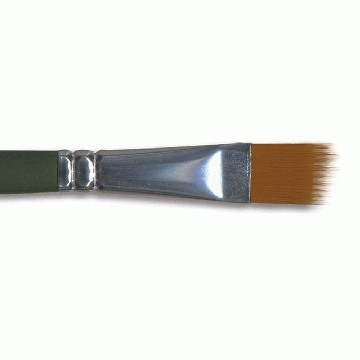
The item shown above is called a "one-stroke" brush, intended for use with the "FolkArt One Stroke" painting technique. Though we know very little about this brush technique, it certainly sounds fascinating.
We've never claimed to know a lot about our game of checkers, either, but today we present "one" stroke problem, and solving it it will call into play the technique of checker visualization, which we believe to be a fascinating art form in its own right.
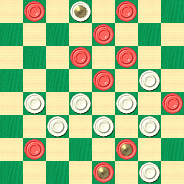
WHITE
White to Play and Win
W:W32,24,23,22,19,18,17,16,K2:BK31,K27,25,20,15,11,10,7,3,1.
Now that's "one" stroke problem! Try to solve it without moving the pieces; when you've had your brush with this one, sweep your mouse to Read More to see the solution.![]()
Three by Three
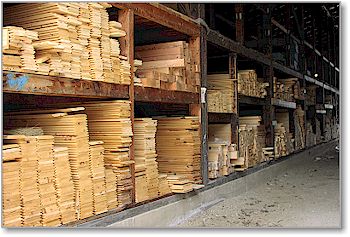
Everyone's heard of a two by four (2x4), and there are other familiar sizes, such as 1x4 and the larger 4x4. But have you ever heard of a three by three (3x3)? There is such a thing, and in the strange world of "dimensional lumber" a 3x3 is in reality 2.5 inches by 2.5 inches.
Fortunately, there's no such thing as "dimensional checkers." A 2x2 or a 4x4 ending is just what the label implies. (We're not really sure where half a checker piece would fit in the scheme of things!) Today, we'll look at the 3x3 ending that's diagrammed below. It's from a game played over the board many years ago at a club in the St. Paul, Minnesota area.
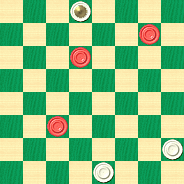
WHITE
White to Play and Win
W:W31,28,K2:B22,10,8.
Don't get cut down to size; sharpen your wits, not your saw, and see if you can solve the problem. When you have the answer, buzz your mouse on Read More to see the solution.![]()
Accurate Judgment
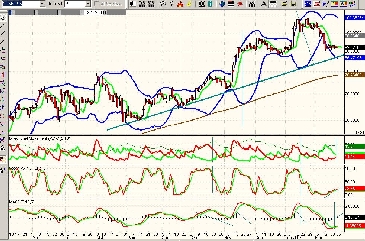
Accurate judgment is a necessary skill for success in the financial markets. If you're able to assess complex information such as that shown in the chart above, and then make the appropriate transactions, you've very likely got what it takes.
In the world of checkers, accurate judgment in endgames is also a critical element in expert play. The position below, from a Samuel Gonotsky game shown years ago by Willie Ryan, requires the keenest of judgment to find the draw.
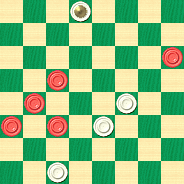
WHITE
White to Play and Draw
W:W30,23,19,K2:B22,21,17,14,12.
How good is your checker judgment? With White in a tough situation, this one is anything but easy and will definitely test your skill. When you've judged your line of play to be correct, click on Read More to see the solution.![]()
Are You Dunne, Yoeman?

There are various definitions of the word yeoman. The most well-known dates to the Middle Ages and refers to an independent landowner, usually of a small parcel, who farmed the land for a living. But yeoman is a naval rank in both the British and American armed forces, and of course yeoman is also a rank in the celebrated Star Trek television series. And then there are the Yeoman of the Guard.
Our picture above, however, is closer to home; it shows surfer Nathan Yeoman skilfully riding one of the heavies at the Banzai Pipeline on the famed North Shore of O`ahu.
There is a checker yeoman, too, or more correctly, Yoemans. He's partnered in with Frank Dunne in the pair of positions below, which form this month's Checker School offering.
BLACK

WHITE
White to Play and Draw
W:WK32,30,K15:BK27,23,21,K6.
J. R. YOEMANS
WHITE
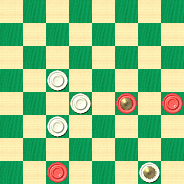
BLACK
Black to Play and Draw
B:W19,15,11,K1:BK14,13,3.
You may not be a Yeoman of the Guard, and it's unlikely (though certainly possible) that you've surfed the Pipeline, but we know you play checkers, and you can be a "Yeoman of Checkers" if you solve these problems. Give it your best and when you've caught the wave, click on Read More for the solutions, a sample game, and detailed notes.![]()
21st Century Checkers Volume 3

We're pleased and honored to present Volume 3 of Richard Pask's 21st Century Checkers series, on the 10-14s. Running well over 100 pages, this is sure to become the definitive modern reference. You can download the book in PDF format here.
As is the case with the first two volumes, the book makes extensive use of color, and if you desire a hard copy we recommend that you use a color printer loaded with plenty of paper and fresh ink cartridges. You can also send the PDF to a commercial printing service for professional printing and binding, though that will not be inexpensive.
Here's a "teaser" from the book.
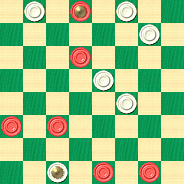
BLACK
Black to Play and Draw
B:W32,30,25,18,14,K3:BK31,23,12,11,2,1.
This is, obviously, at the expert level (or above!) but you should nevertheless give it a try and see what you can make of it. The solution is found on page 55 of Mr. Pask's new book.
We thank Mr. Pask for the privilege of presenting his work to the world-wide checker-playing community.![]()
Hurry Back to School

School is back in session, and the kids had better hurry and catch the bus so as not to be late--- we suppose we should say "tardy"--- for class. A little extra speed might avoid having to bring home a note from the teacher.
A little extra hustle is also called for in this month's speed problem, which looks more complex than it really is. Keen eyes and good checker sense will solve this one, but there's not a moment to lose, as we're only allowing 30 seconds to solve it.
Don't miss the bus; click on the link below, find the answer, and then ride back and click on Read More to check your moves.
September Speed Problem (moderate difficulty; 30 second time limit)
![]()
Uncle Ben's Porch: Making Varsity
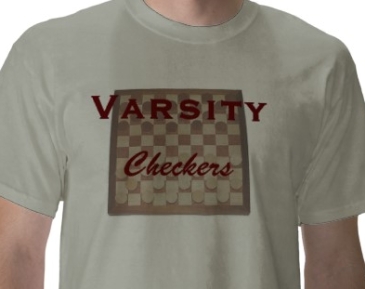
Tommy had a very important match coming up. There was one spot left on the varsity checker team for the coming school year; Tommy, as Captain of the junior varsity, had a shot at it.
Coach Hovmiller tried to be fair about these things. He set up a series of test matches and promoted the players who had the best scores combined with the best attributes such as team play, sportsmanship, and so on. Tommy ranked well in all of the latter factors, but he was having a run of bad luck with the test matches.

It wasn't that Tommy was a poor player; he was one of the best. But he'd blundered in one game and had a loss of confidence, quickly losing two more. Coach Hovmiller knew that Tommy was better than that, but he wouldn't bend his own rules. Fair is fair, and Tommy had to win the next match to gain a varsity position.
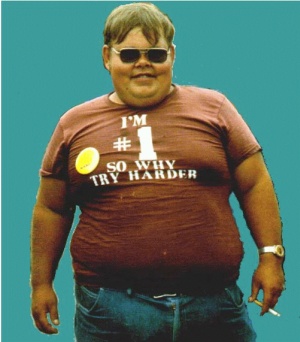
The trouble was, the match was with Joey Zee, and Joey was not a very nice boy (see previous Checker Maven column). Joey was almost dropped from the team by the Coach several times during the year for his bad behavior. He had no chance at a varsity position, but Tommy still had to play him to complete the round-robin competition, and Joey would like nothing better than to knock Tommy out of the running. Joey was always calling Tommy "goody two-shoes." Worse, Joey wouldn't leave teammate Tina Tooner alone, and Tommy and Tina had recently become friends in the way that a young boy and a young girl will do.
Joey was insanely jeaous, and Tommy had no idea what he might do. Joey was known to cheat when he could get away with it, and was the author of no end of dirty tricks and mean stunts.

Tommy was on Uncle Ben's porch, as was common most Saturday mornings. Uncle Ben, a retired master player, had some years ago taken Tommy under his wing and given him weekly lessons, always accompanied by a pitcher of his delicious lemonade. He wasn't really Tommy's uncle, of course, but Tommy called him that out of respect.
Tommy and Uncle Ben had developed a very close and open relationship. Tommy often sought the old gent's advice, and this was one of those times. He had just finished explaining to Uncle Ben his loss of self-confidence and his intimidation at having to play Joey Zee on Tuesday afternoon at after-school team practice.
"Everyone loses some games," Uncle Ben explained. "The old saying is that if you don't want to lose then don't play."
"I know, Uncle Ben, but I was doing so well ... "
"Tommy, a checker rating or a won and lost record only tells someone how well you've played in the past. It can't say for sure how well you'll play in the future. Do you know the difference between a great player and an average player?" Uncle Ben asked.
"Skill?" Tommy replied.
"Well, yes, of course, but there's something really fundamental. A great player learns from his losses, takes them in stride, and takes on the next game with confidence. A lesser player isn't able to do that. And Tommy, you're not a lesser player. You have the potential to possibly even rise to the professional ranks some day."
Uncle Ben wasn't liberal with compliments of this type; he didn't want his students to become overconfident or even arrogant. But this was the time to give Tommy's ego a little boost, and in any case, Uncle Ben knew that what he said was true, or he never would have said it.
"Really, Uncle Ben?"
"Yes, Tommy. Now, the problem you're having is that you're thinking too much about that varsity position, instead of thinking about each game and each move as it takes place. If you'll concentrate on trying to make the best move every time, and nothing else, you'll pull out of your slump before you can say 'Jack Robinson'."
"That makes sense, Uncle Ben. I'll do the best I can. But what about Joey? He's so mean and I don't know what he might do."
"Well, Tommy, you can't control that. But you don't have to let it get the better of you, either. Concentrate on playing your game. If Joey acts up, stop the clock and call for the Coach. Stop Joey dead in his tracks. And by all means remain a good sport yourself. Don't retaliate, don't do mean or foolish things yourself. Just play your game and make sure Joey knows that he can't bully you or get away with anything."
"Thanks, Uncle Ben," said Tommy. "That's great advice."

Uncle Ben was pouring lemonade and had turned to the checkerboard on the table in front of them. He passed a tall, frosty glass to Tommy and said, "Now try this one, and work on keeping your focus."
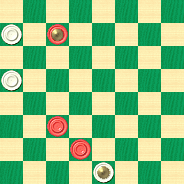
BLACK
Black to Play and Draw
B:B7,11,K27:W20,28,K2.
Tommy sat at the board for the full five minutes that Uncle Ben usually allowed him to solve a problem. "Here it is, Uncle Ben!" Tommy announced, and proceeded to demonstrate the solution.
Would you make the Varsity Team? Show the right stuff by solving the problem (lemonade is optional but highly recommended). When you're done, click on Read More to see the solution, a sample game, and a dozen more examples of this theme.![]()
An Historical Game

In today's entry in our Checker School series, drawn from Ben Boland's celebrated Famous Positions in the Game of Checkers, Mr. Boland is unusually laconic and we had to spend a few minutes divining the reason he titled the study below "An Historical Game." You'll understand it better after you try the problem and then view the solution and notes.
BLACK
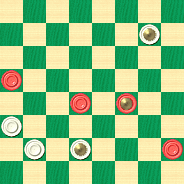
WHITE
Black Plays; White Draws
W:WK8,21,25,K26:B13,18,K19,28.
Forces are even (Black is about to get a second king), but in checkers we know that's only half the story. Black has superior mobility and that often means victory. It looks like White is going to have an historic struggle here just to pull out a draw.
Can you make personal history by solving the problem, or will you just be history? It's not something to become "historical" over; give it your best try and then click on Read More to see the solution and all the trimmings.![]()
Now You Dunne It

We think the poor fellow in the cartoon above is going to be in a lot of trouble in very short order. We only hope that he can somehow win the situation, but that's going to be quite a challenge.
Another kind of win that's a real challenge occurs in our game of checkers (although we'll bet it's easier than the situation depicted in the cartoon). It's known as Dunne's Win and it will be explained to us by Willie Ryan, as we quote from his classic Tricks Traps & Shots of the Checkerboard.

"Similar to the difficult George Dick Gambit, the ever practical Dunne's Win is a delicately balanced positional win that white is required to engineer by precise play.
Here's the run-up: 9-14, 22-17, 11-16, 25-22, 8-11, 22-18, 16-20, 18-9, 5-14, 29-25, 4-8---A, and we have the position depicted on the diagram, known as 'Dunne's Win.'
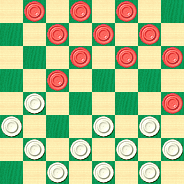
WHITE
White to Play and Win
W:W32,31,30,28,27,26,25,24,23,21,17:B20,14,12,11,10,8,7,6,3,2,1.
A---Black's position is hopeless after this move, with 22 pieces still on the board. The correct procedure is 11-15*, 25-22, 7-11*; now either 17-13 or 24-19 taxes black. For continuation, see Reisman's Pioneer Book, the leading authority on this formation."
Can you do this problem, or will you get Dunne on? When you Dunne done it, click on Read More to see the solution and notes.![]()
The Checker Maven is produced at editorial offices in Honolulu, Hawai`i, as a completely non-commercial public service from which no profit is obtained or sought. Original material is Copyright © 2004-2025 Avi Gobbler Publishing. Other material is public domain, as attributed, or licensed under Creative Commons. Information presented on this site is offered as-is, at no cost, and bears no express or implied warranty as to accuracy or usability. You agree that you use such information entirely at your own risk. No liabilities of any kind under any legal theory whatsoever are accepted. The Checker Maven is dedicated to the memory of Mr. Bob Newell, Sr.

